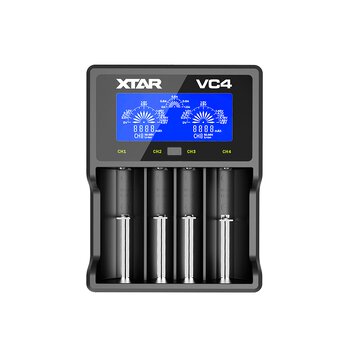Xtar is a renowned manufacturer of high-quality Li-ion battery chargers, flashlights and Li-ion batteries. Xtar products are sold in more than 120 countries, including the most important countries. in the USA, Germany, Japan and Russia. Xtar uses the highest quality materials to manufacture its chargers – from the plastic of the housing to the high-performance electronics. All Xtar chargers have the CE certification required for European markets.
VC4 is a professional processor charger with a three-stage TC/CC/CV charging process and an LCD display. It charges 1-4 Li-ion 3.6 / 3.7V and Ni-MH cells of any capacity in sizes AAA/R03, AA/R6, 10440, 14500, 14650, 16340, 17500, 17670, 18350, 18500, 18650, 18700. In the two outer channels it is possible to charge batteries in sizes R14, R20, 20700, 21700 - only unprotected, 22650, 25500, 26650, 32650.
The backlit LCD display of the Xtar VC4 charger shows real-time information about the operating status of the charger: the voltage of the batteries being charged, the charging current, the charge used to charge the cells, indicates any errors and informs you when charging is complete. At the same time, the current operating status for the two channels is displayed. Switching between the other two channels is possible using the CH button on the charger housing. The information about the charge used can be used to measure the capacity of the batteries. To measure the capacity of the battery, it should be discharged to the appropriate voltage cut-off level (usually 2.5V for Li-ion, 0.9V for Ni-MH) and put into the VC4 charger. When charging is complete, the display can read the value of the charge used to charge the battery. This will always be 3-5% higher than the actual capacity of the battery. This is due to the fact that the battery charging process is never 100% efficient, i.e. a slightly higher charge is needed to charge the battery than the actual cell capacity.
The maximum charging current is 1A and is only available for the two extreme channels and only when the middle channels are not used. The batteries in the middle channels are always charged with a current of 0.5A. When charging 3 or 4 batteries, the VC4 charges all batteries with 0.5A.
What is the TC/CC/CV loading method? It is a three-stage charging process for Li-ion cells that ensures that the cell is kept in good condition by charging with the right current at each stage and completing the charging process at the right time.
The different steps of the TC/CC/CV process are:
- TC phase: cells discharged below 2.9V are 'woken up' with a lower current.
- CC phase: after reaching 2.9V, the cell is charged with a constant current of 0.1A to 1A (depending on the power source used and the number of batteries charged).
- CV phase: when the cell is almost charged, the charger switches to charging with decreasing current until the voltage of 4.2V on the cell is reached. Once 4.2V is reached, the charging process is complete - the battery is fully charged.
Charged batteries left in the charger will undergo a natural self-discharge process. Li-ion battery charging will resume when the battery voltage drops below 3.9V. For Ni-MH batteries, charging is not resumed with a voltage drop due to self-discharge.
The Xtar VC4 charger has the function of reactivating deeply discharged cells and cells with a voltage of 0V. Many chargers on the market are not able to charge such batteries. This is where the Xtar VC4 charger comes to the rescue, which in many cases allows you to 'rescue' such cells. Simply insert a deeply discharged battery into the VC4 charger as you would with normal charging - the charger will detect the discharged battery and attempt to reactivate it. Remark! Cells discharged below a certain level are irreversibly damaged and may not be able to reactivate. Avoid too deep discharge of Li-ion and Ni-MH batteries - this can lead to a significant reduction in their durability and capacity or lead to their complete inefficiency.
The Xtar VC4 charger comes with a USB cable. A power adapter is not included. To power the charger, all you need is any charger with a USB cable, e.g. from a phone, or a USB socket, or a computer with a free USB port. The recommended power of the USB power adapter is 2.1A (2100mA). It is possible to use a weaker power supply, V4 will adjust the charging current according to the capabilities of the power source.
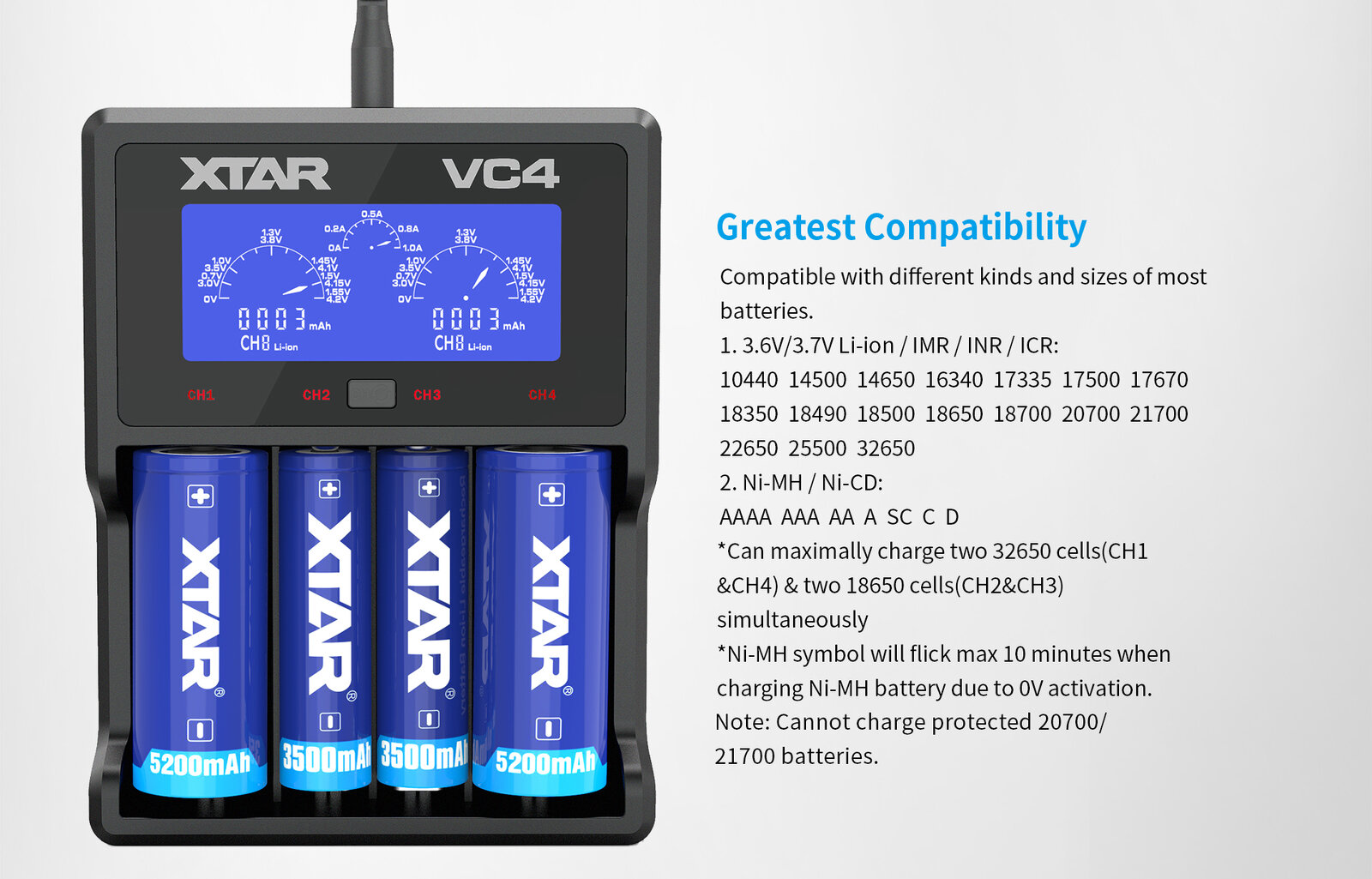
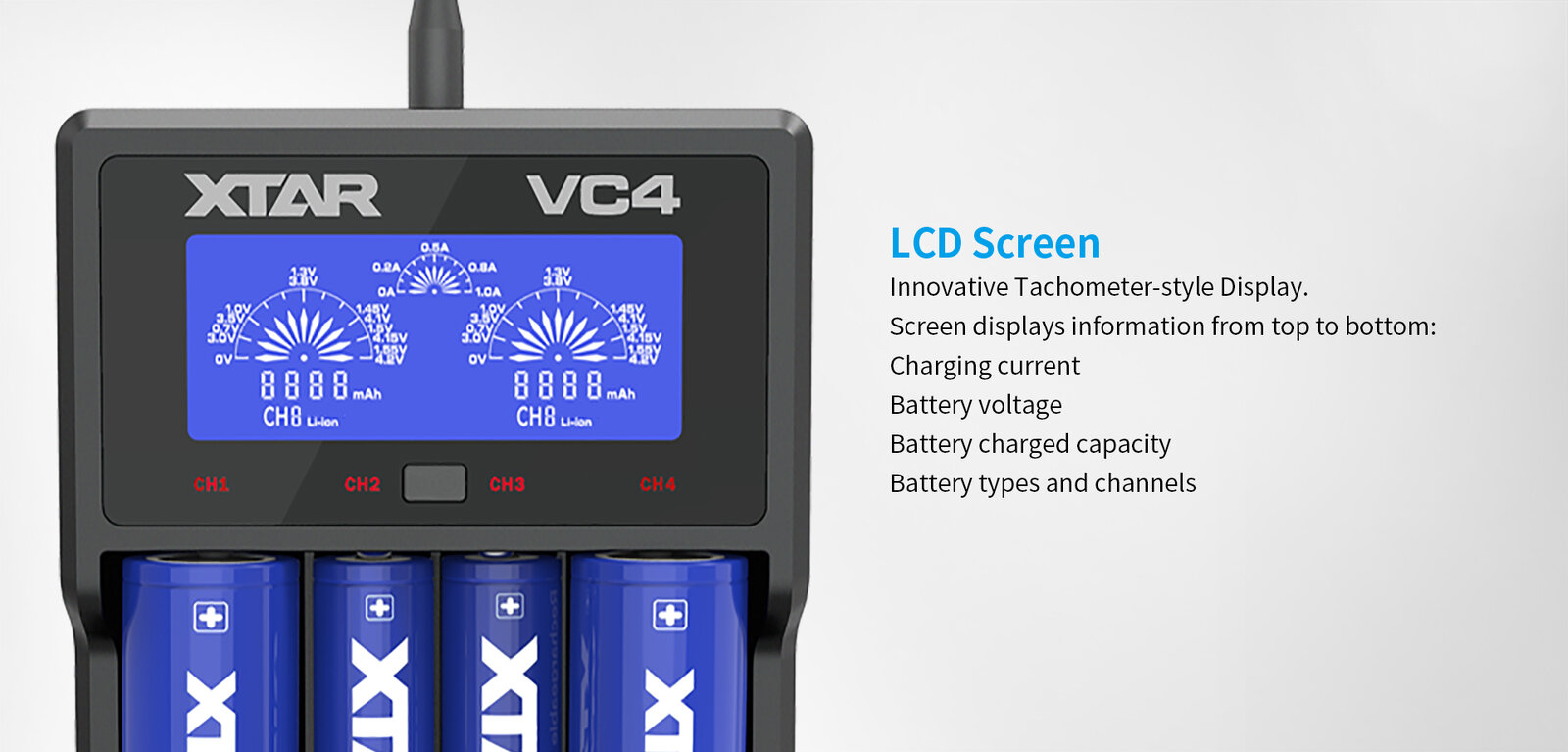
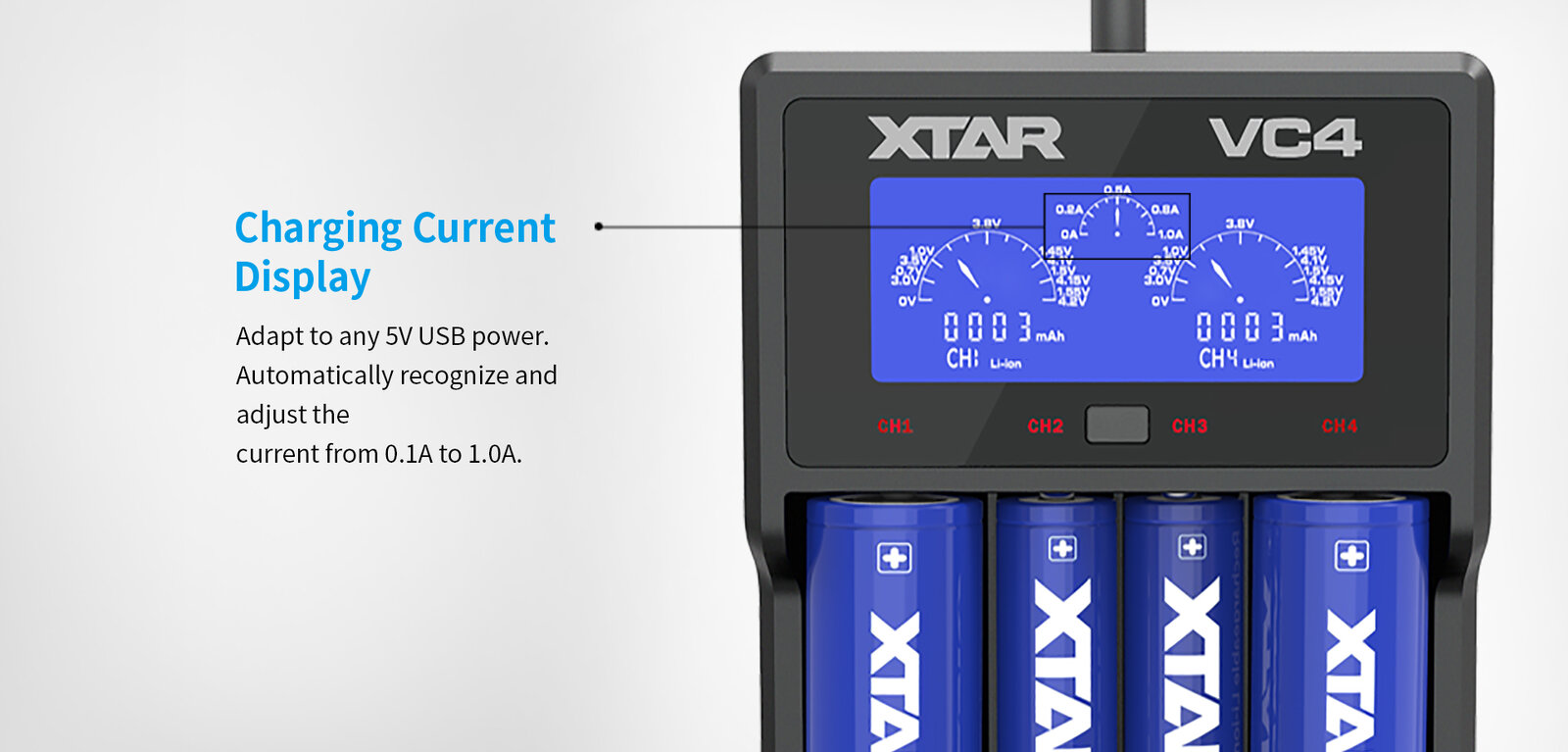
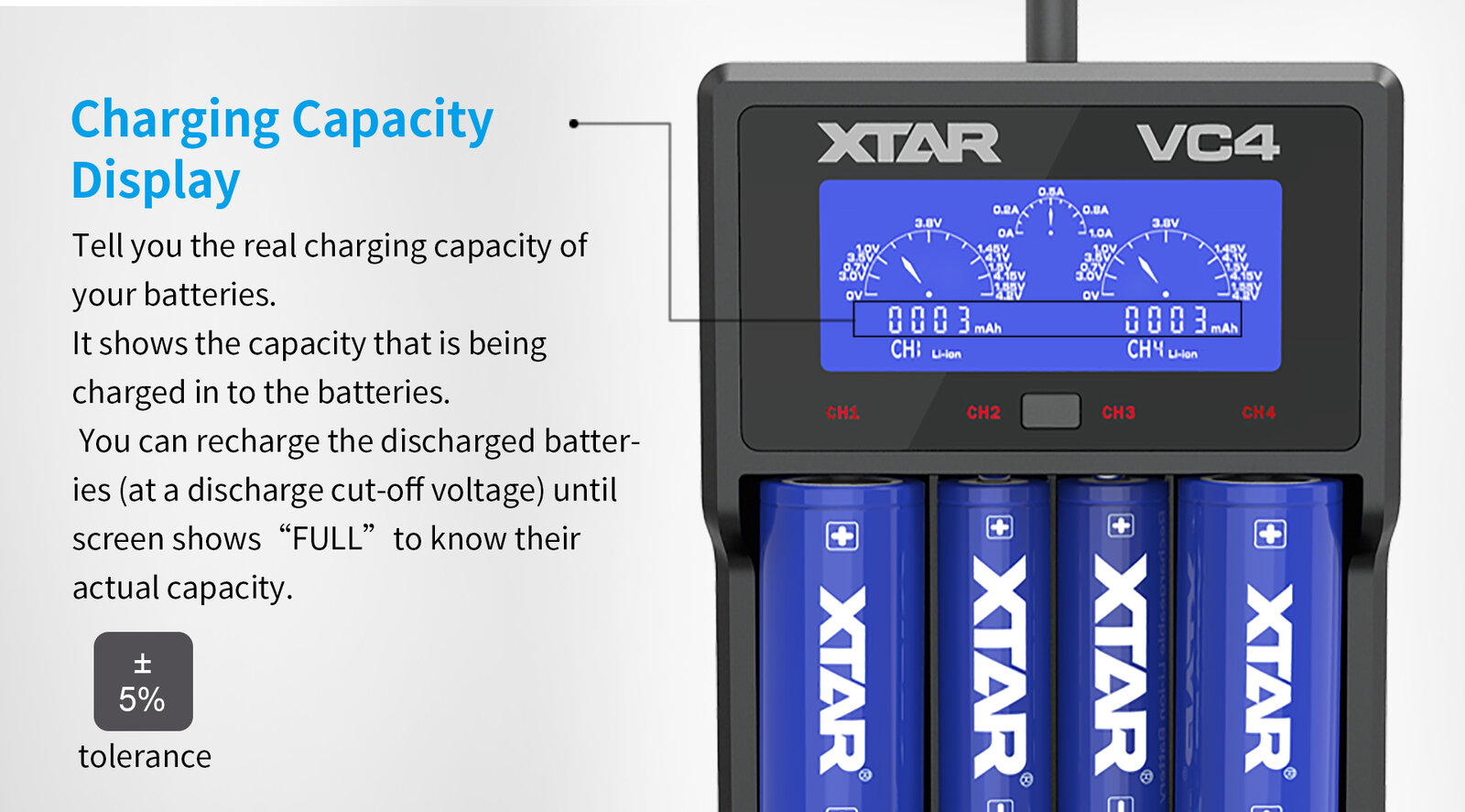
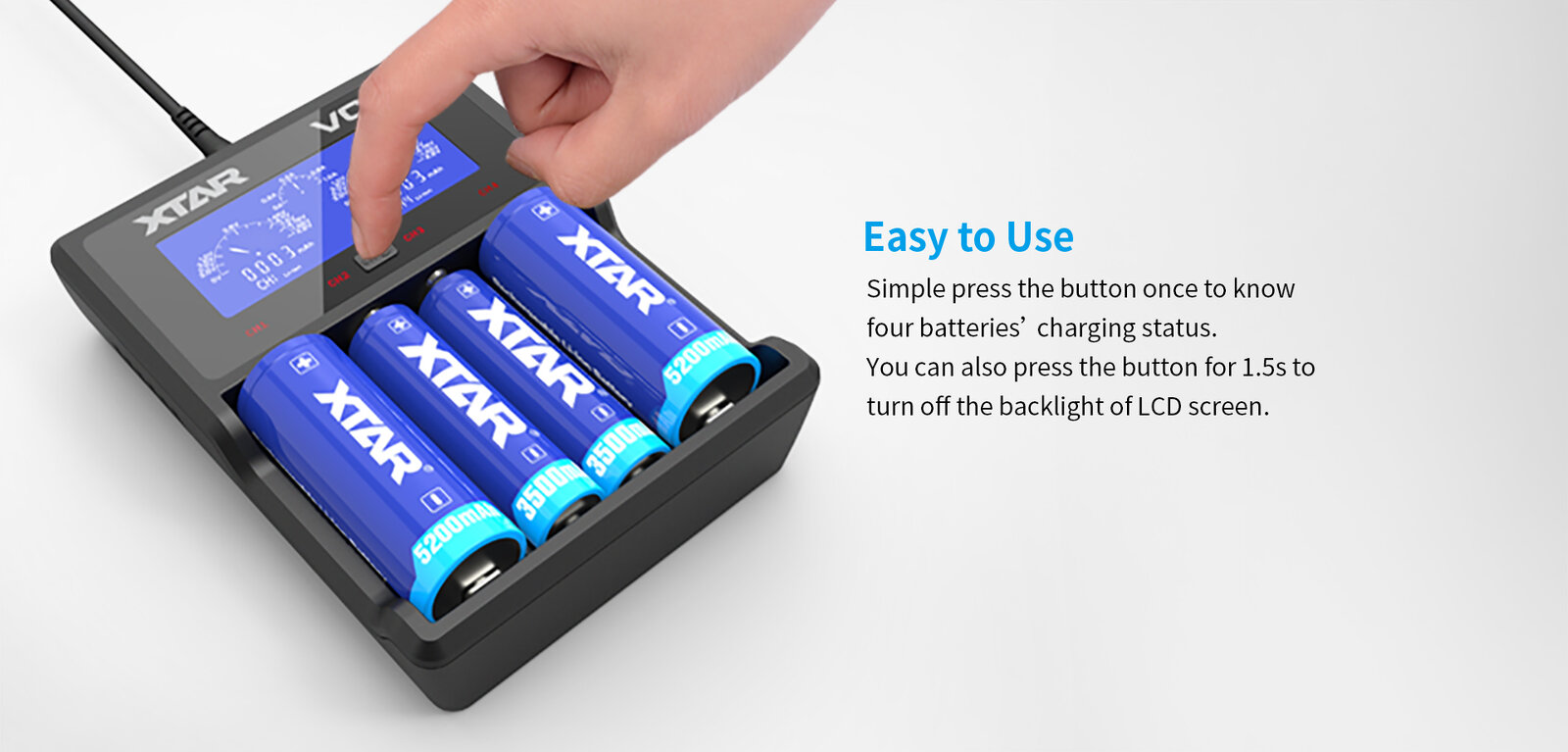
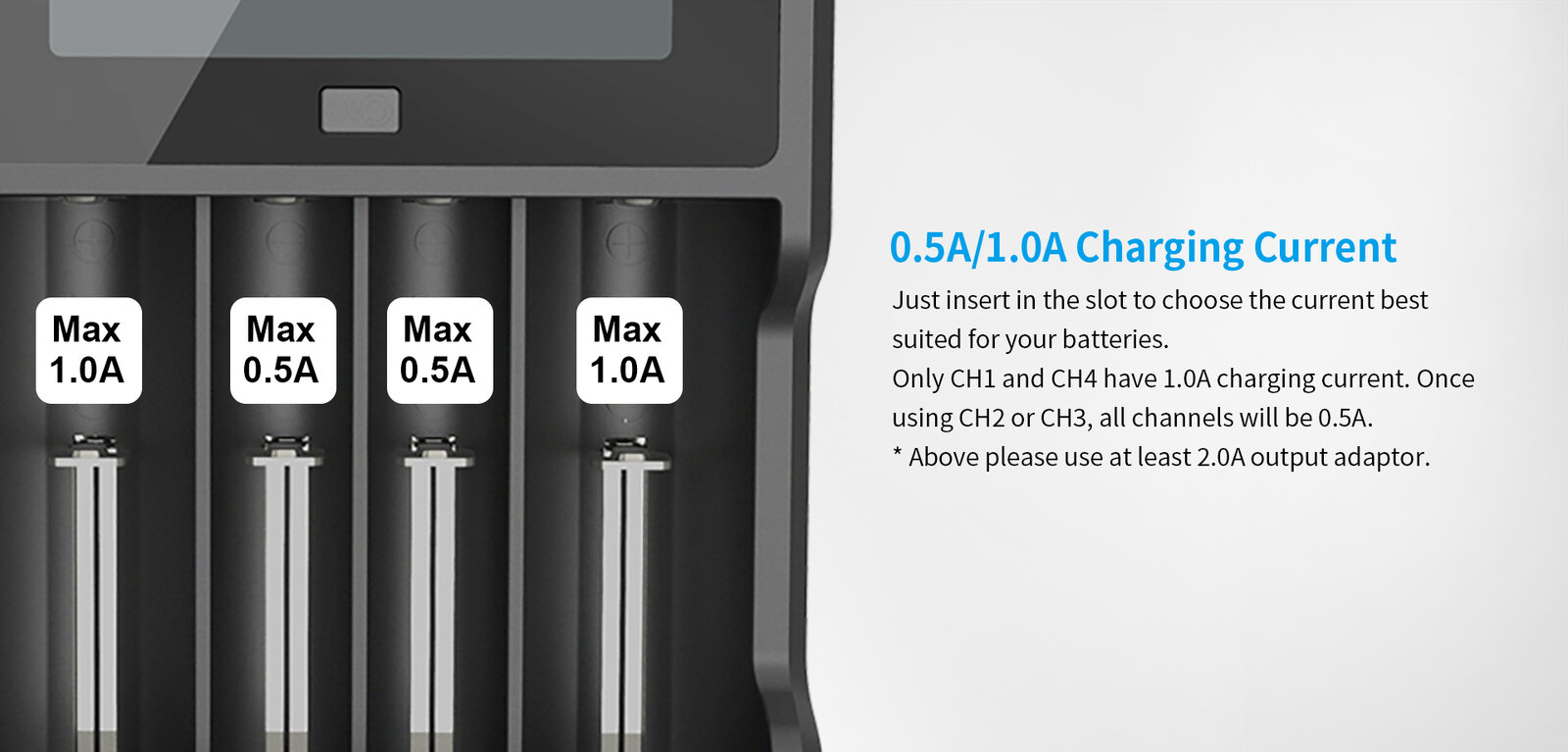
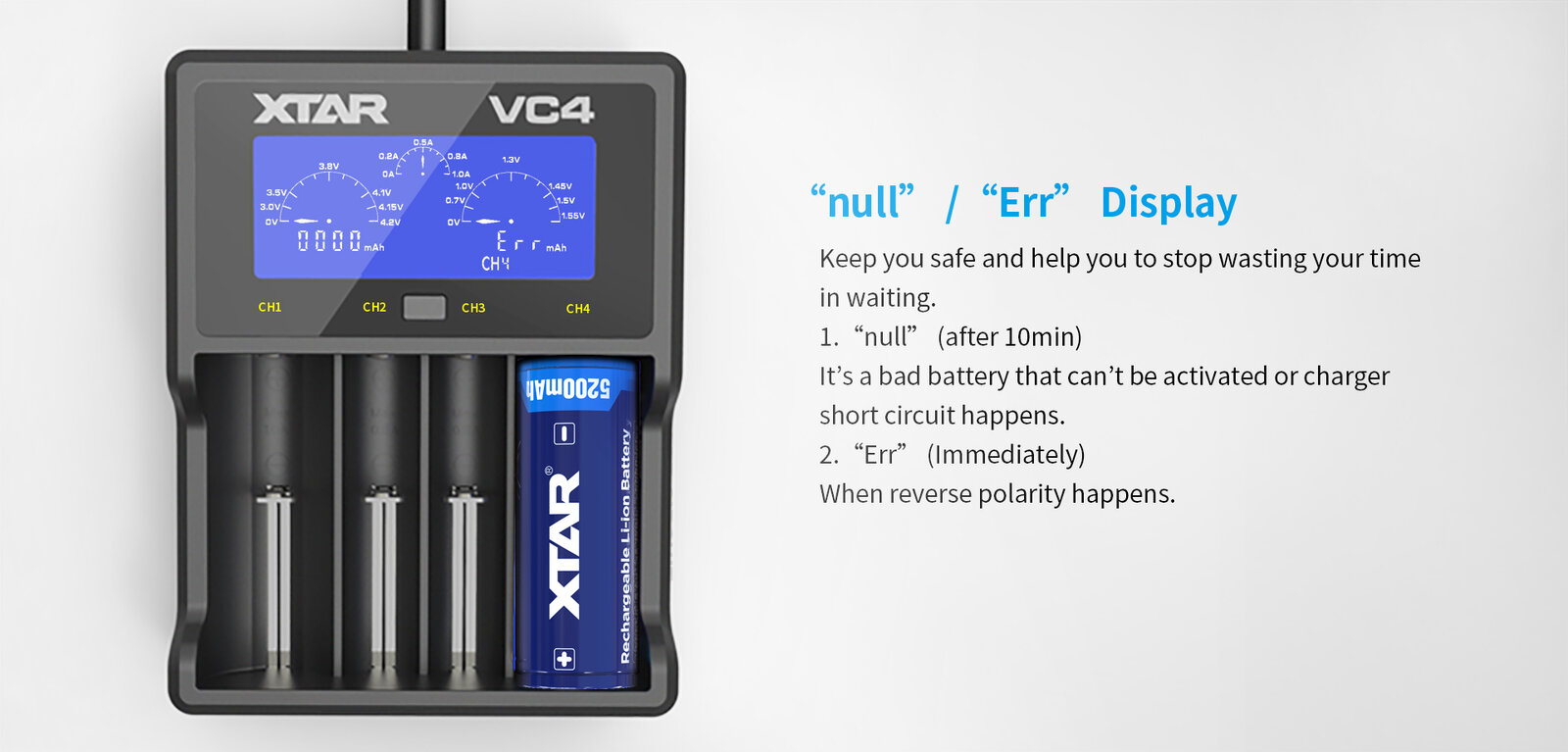
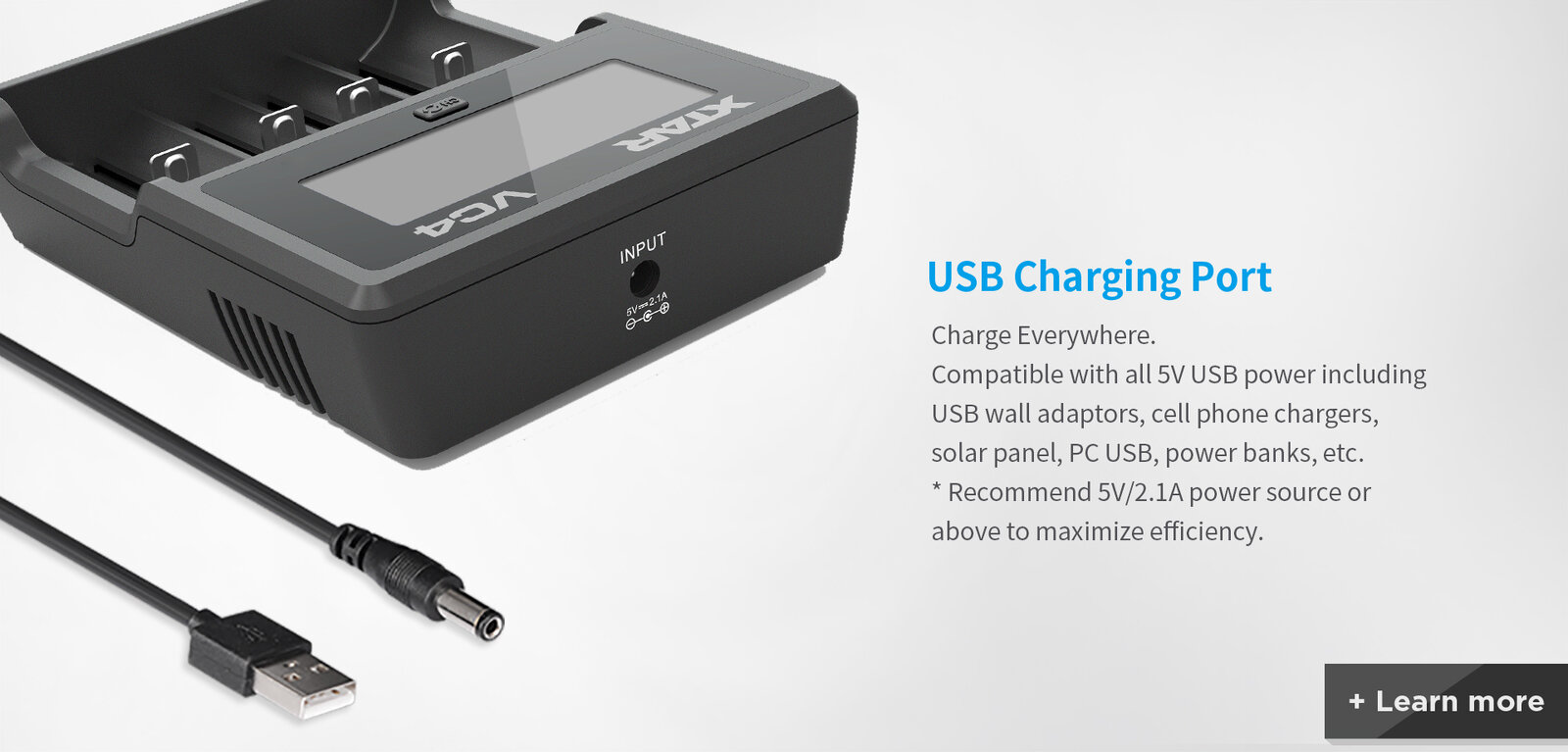
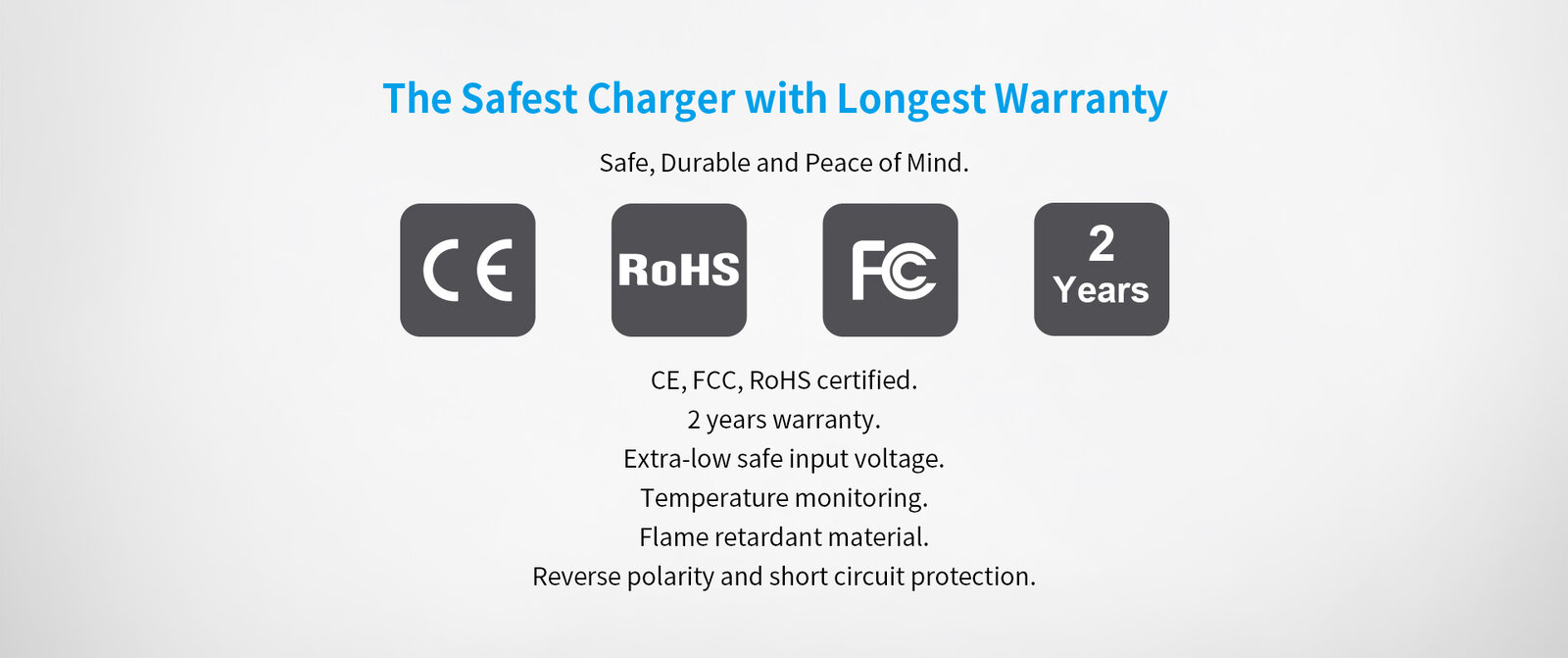
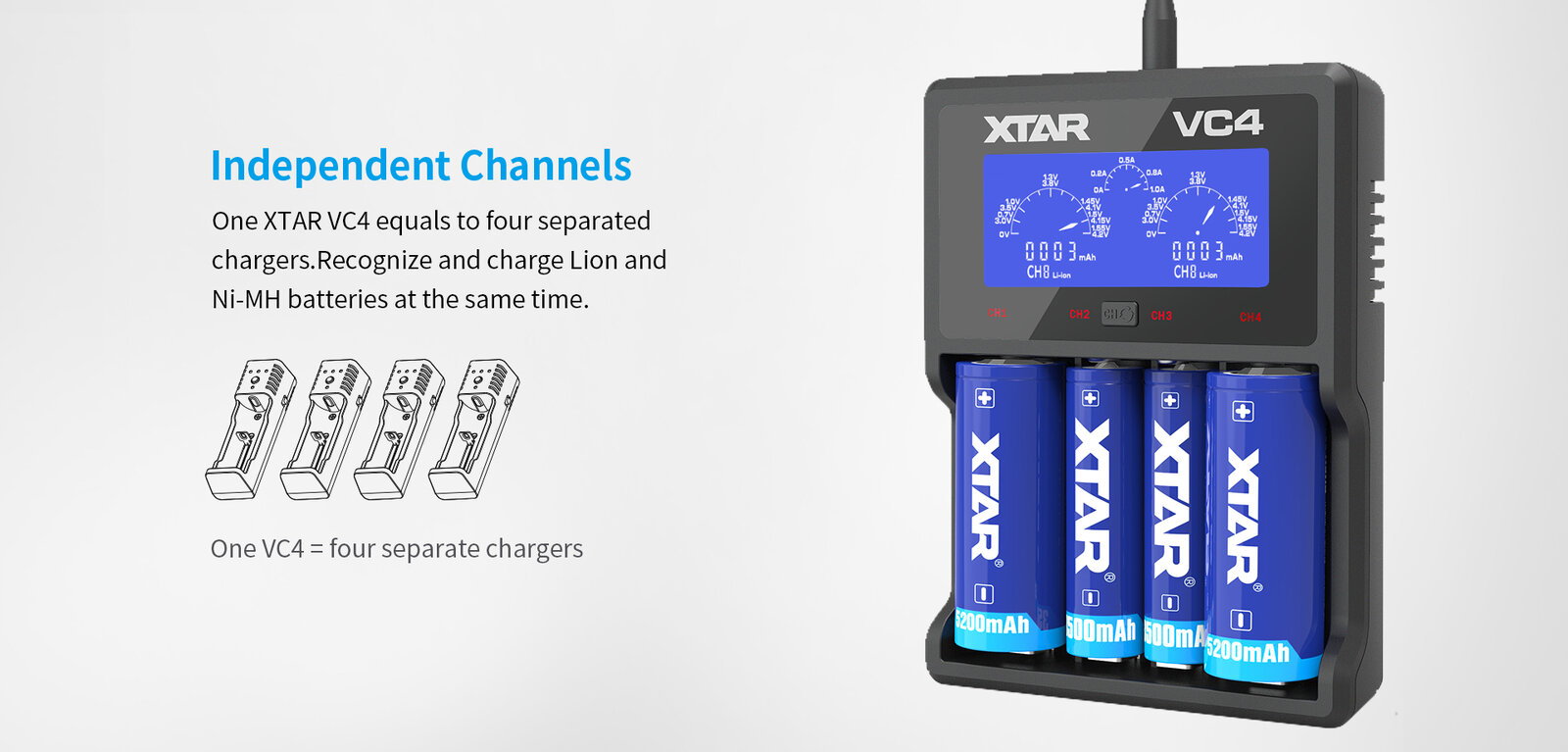
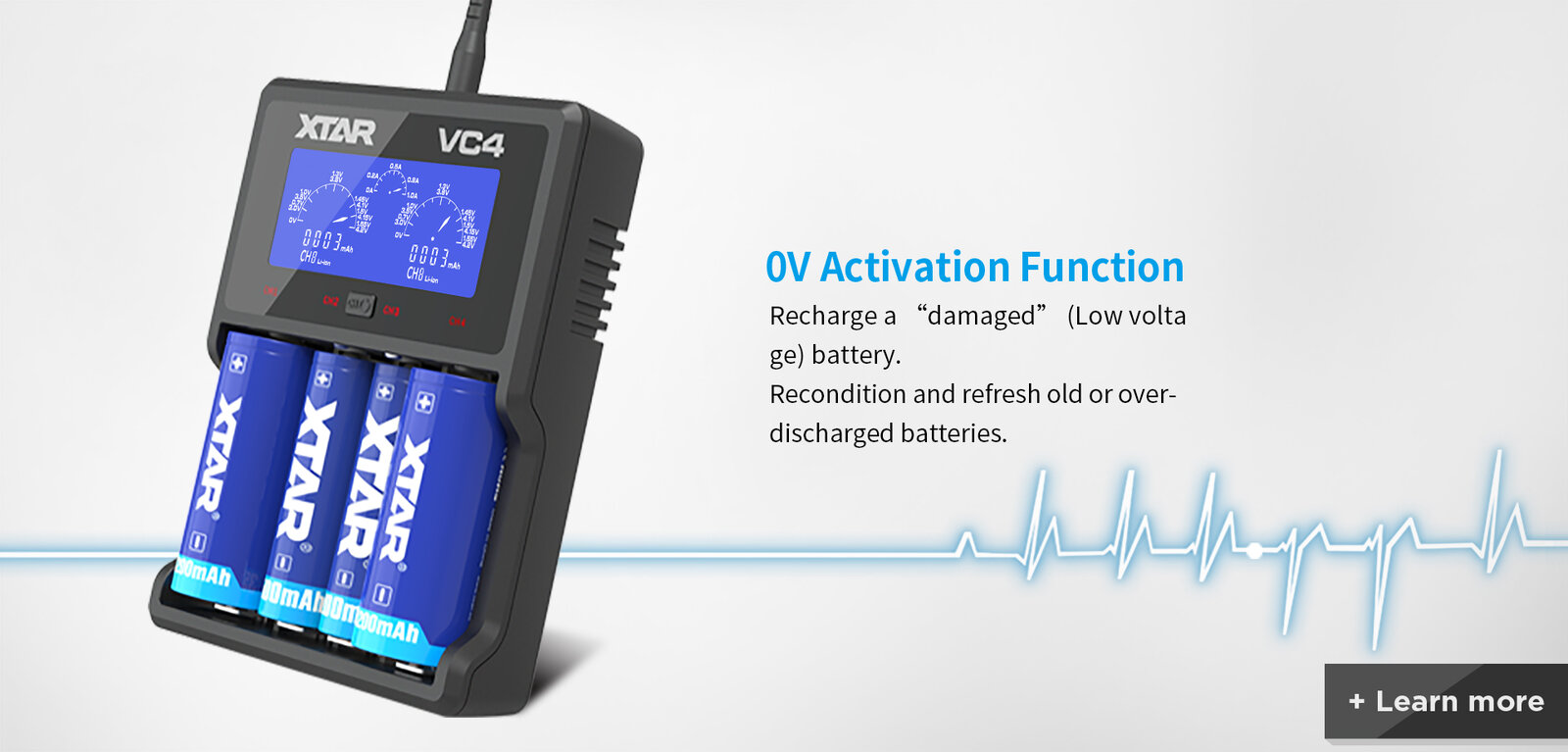
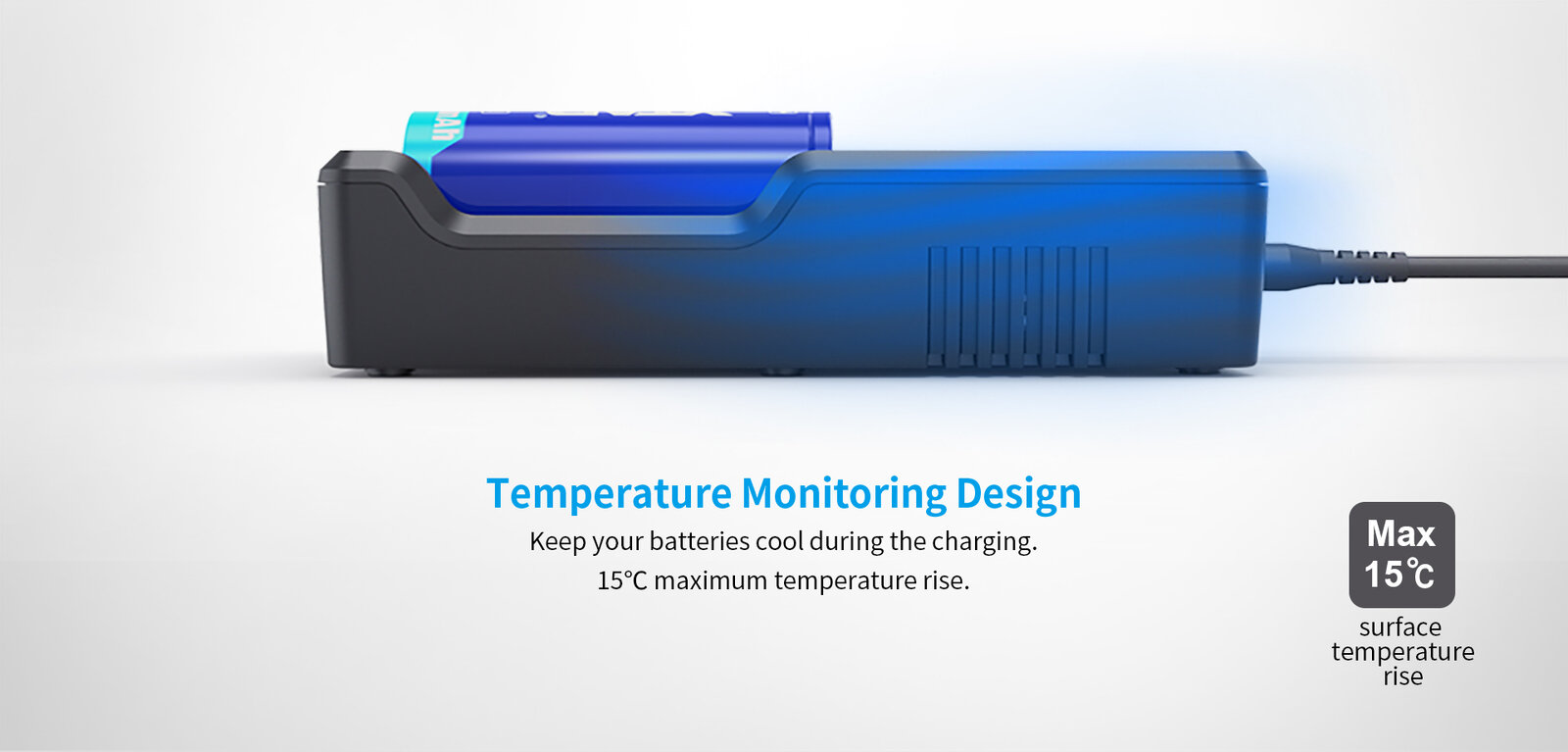
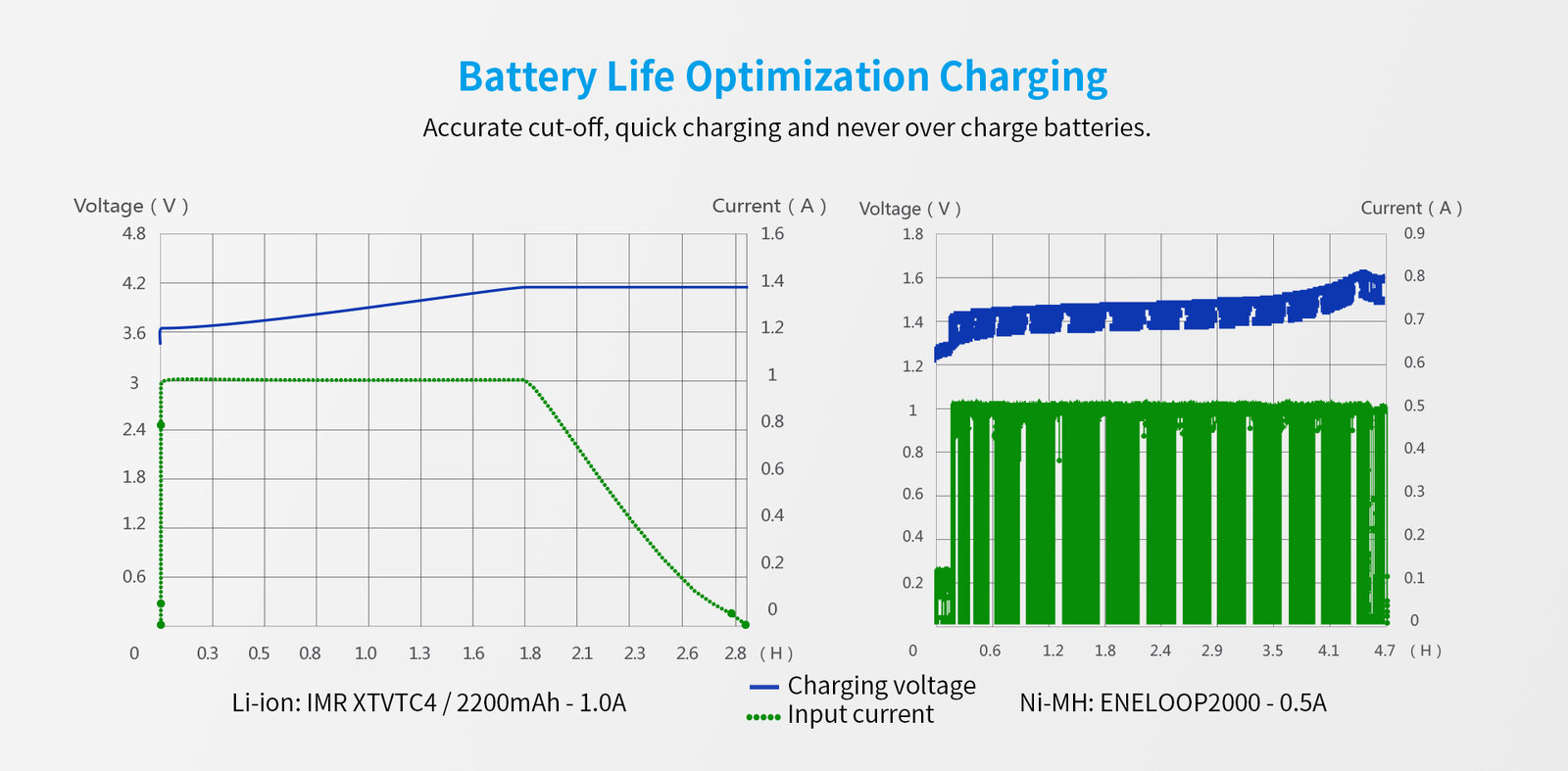
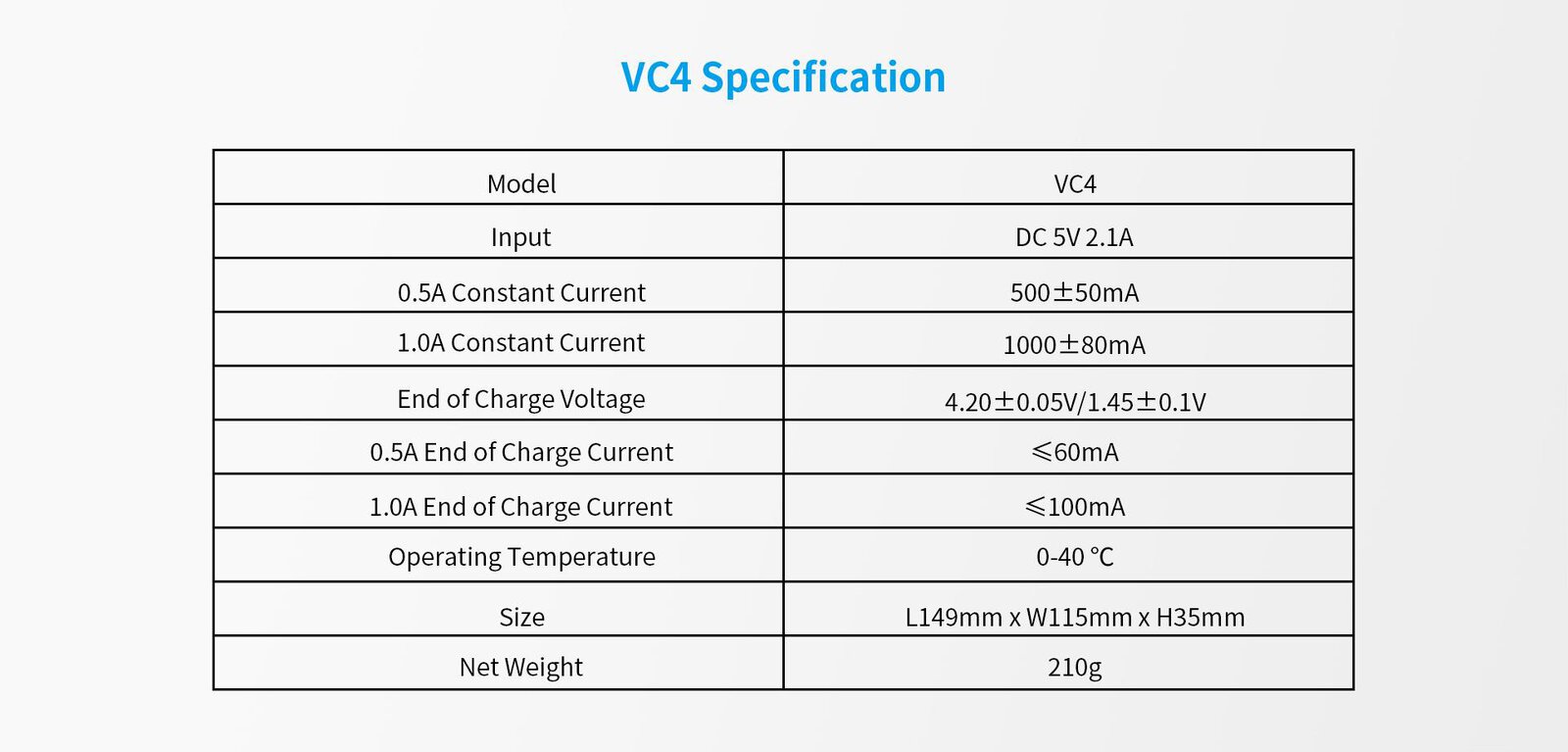
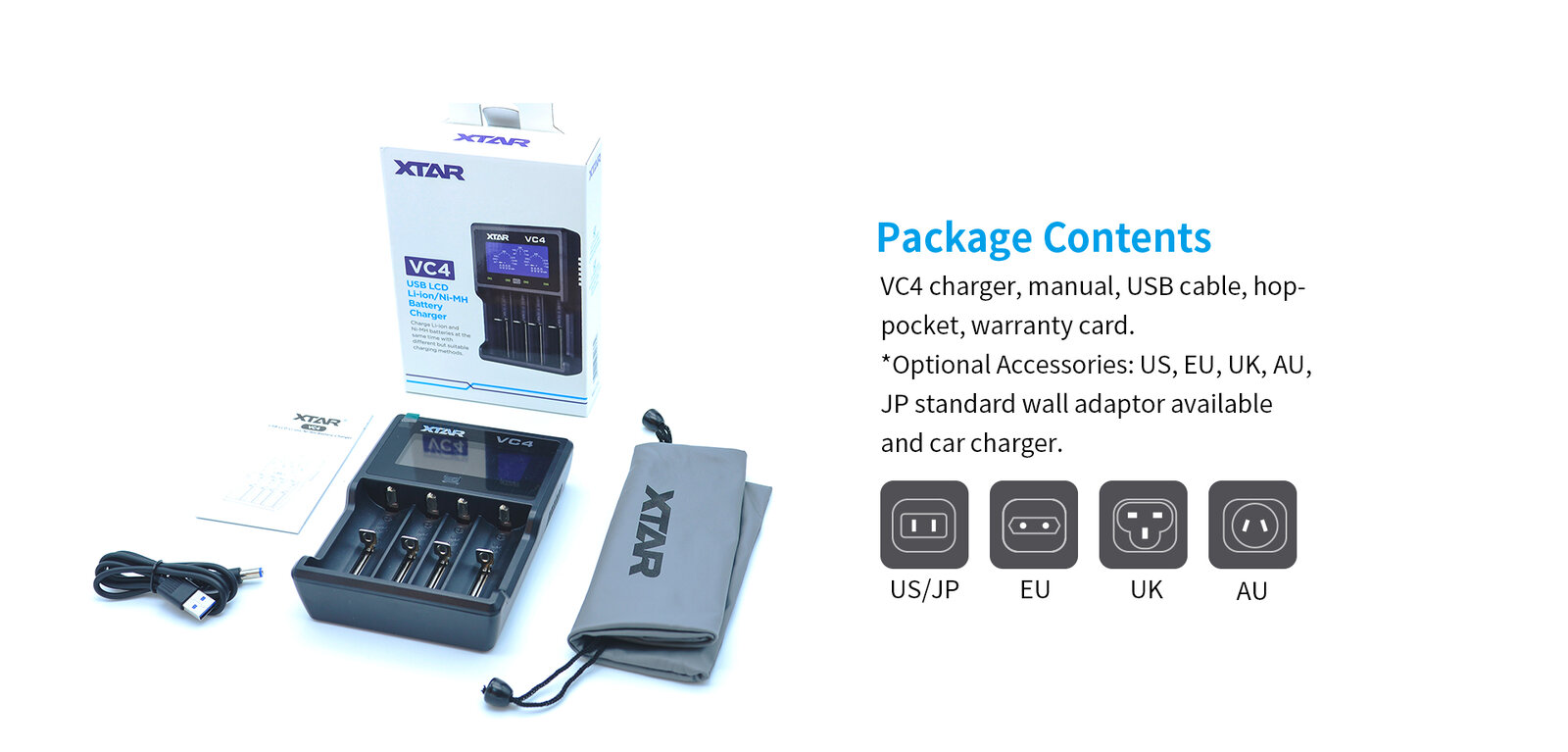
- Li-ion batteries 3.6-3.7V, unprotected
- Li-ion batteries 3.6-3.7V, protected (with PCM/PCB)
- Ni-MH batteries
- 5V DC(kabel USB w zestawie)
- Processor-controlled TC/CC/CV for Li-ion
- Processor-controlled CC with -ΔV/0ΔV/PVD for Ni-MH
- 1-2 batteries placed in the outer channels (1 and 4) - max 1000mA ±80mA
- 3-4 batteries or 1-2 batteries placed in the middle channels (2 and 3) - max 500mA ±50mA
- 4.2V ±0.05V
- Reactivation of deeply discharged cells and 0V cells
- Cell capacity measurement (accuracy ±5%)
- Before the charger overheats
- Against overload / short circuit
- Before reverse polarity of cells
- Charge
- Working/Charging Status
- Charging
- Battery voltage
- Charge used to charge the cells
- VC4 charger
- USB cable
- Li-ion batteries 3.6-3.7V, unprotected
- Li-ion batteries 3.6-3.7V, protected (with PCM/PCB)
- Ni-MH batteries
- 5V DC(kabel USB w zestawie)
- Processor-controlled TC/CC/CV for Li-ion
- Processor-controlled CC with -ΔV/0ΔV/PVD for Ni-MH
- 1-2 batteries placed in the outer channels (1 and 4) - max 1000mA ±80mA
- 3-4 batteries or 1-2 batteries placed in the middle channels (2 and 3) - max 500mA ±50mA
- 4.2V ±0.05V
- Reactivation of deeply discharged cells and 0V cells
- Cell capacity measurement (accuracy ±5%)
- Before the charger overheats
- Against overload / short circuit
- Before reverse polarity of cells
- Charge
- Working/Charging Status
- Charging
- Battery voltage
- Charge used to charge the cells
- VC4 charger
- USB cable
5th Floor, No.77 Xinhe Rd, Shangmugu
518000 Shenzhen
Chiny
Email: info@xtar.cc
Telephone: (+86) 755-25507076
Geodetów 24
80-298 Gdańsk
Polska
Email: contact@baltrade.eu
Telephone: 58 552 20 20
